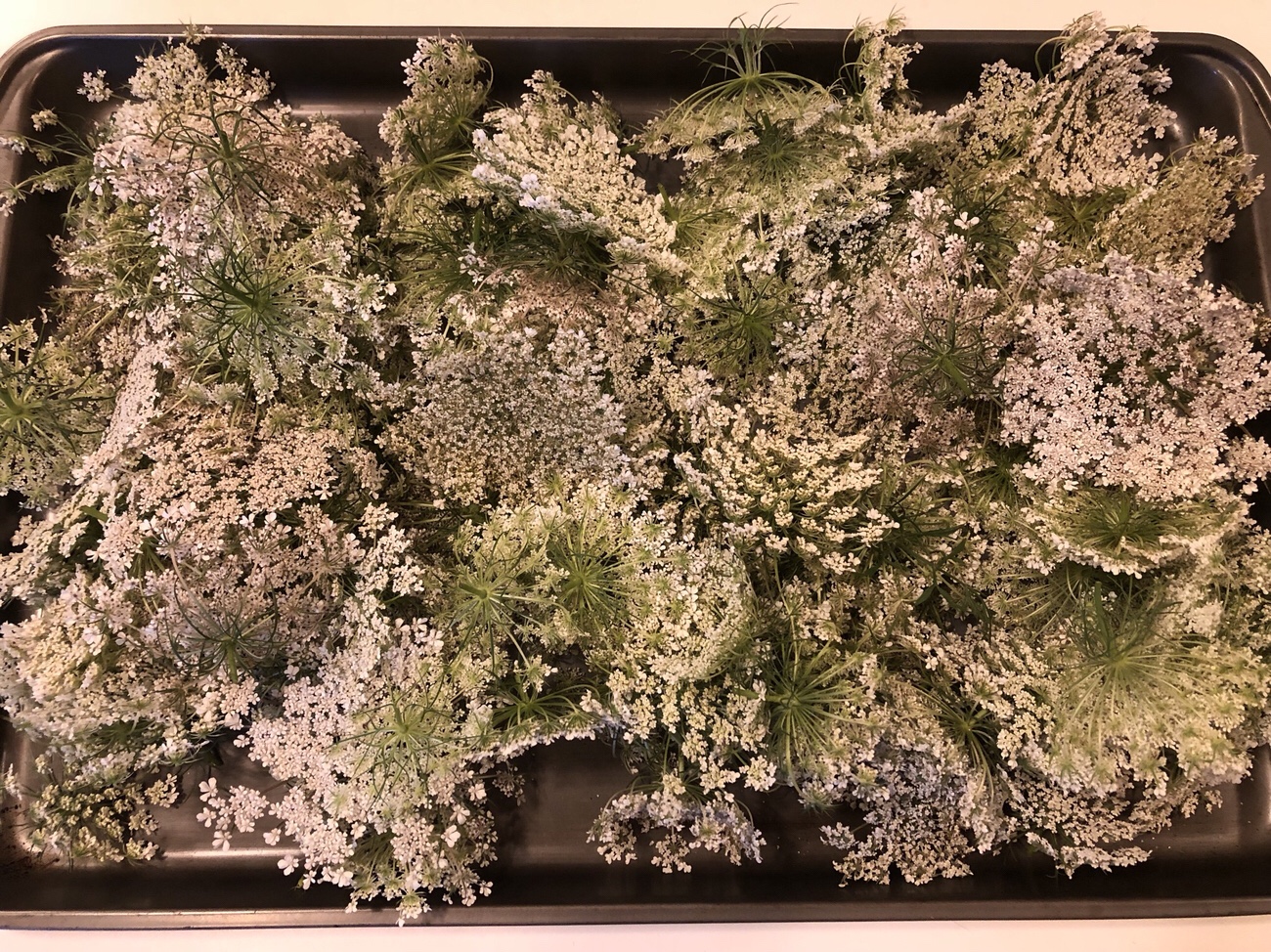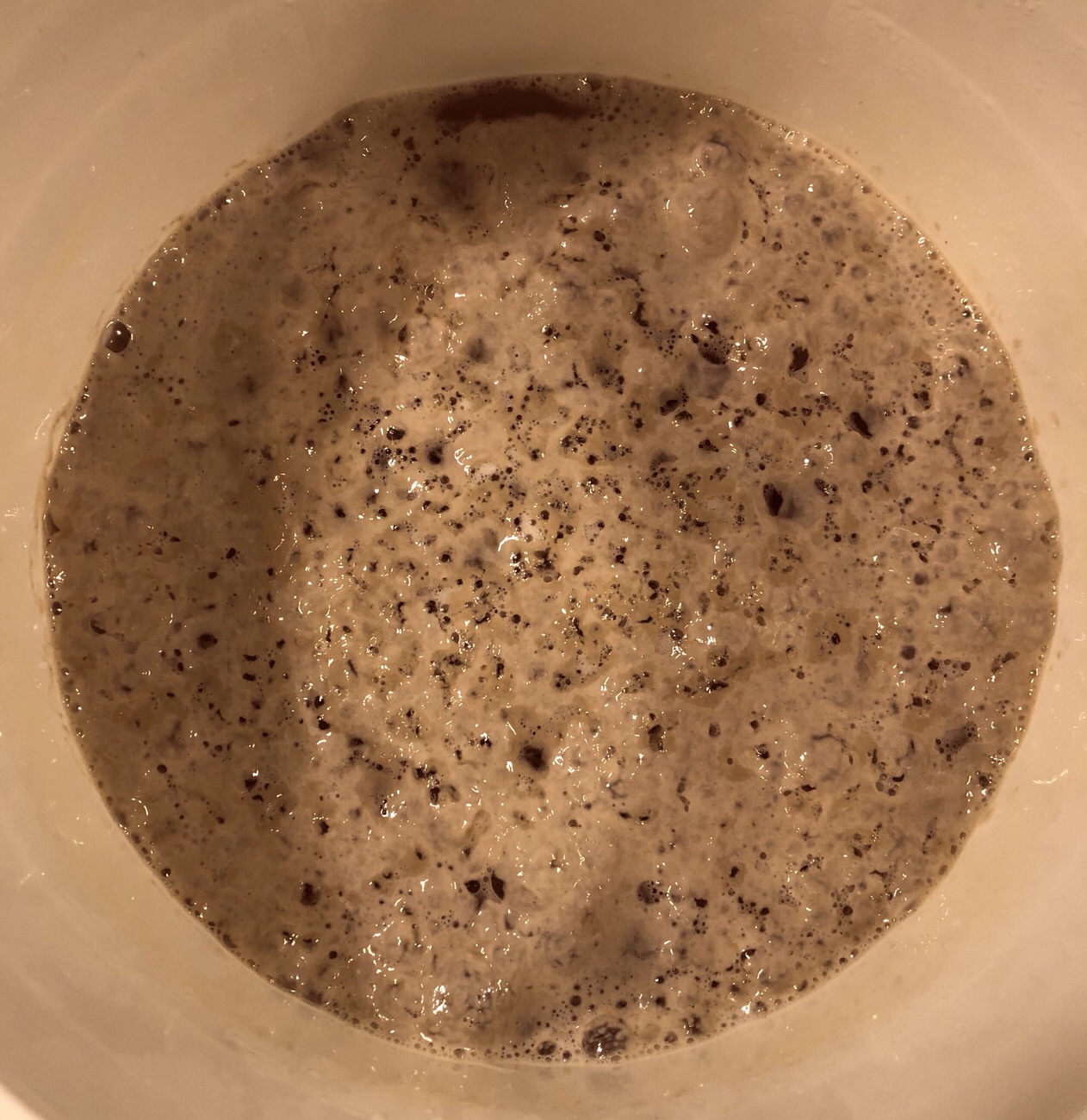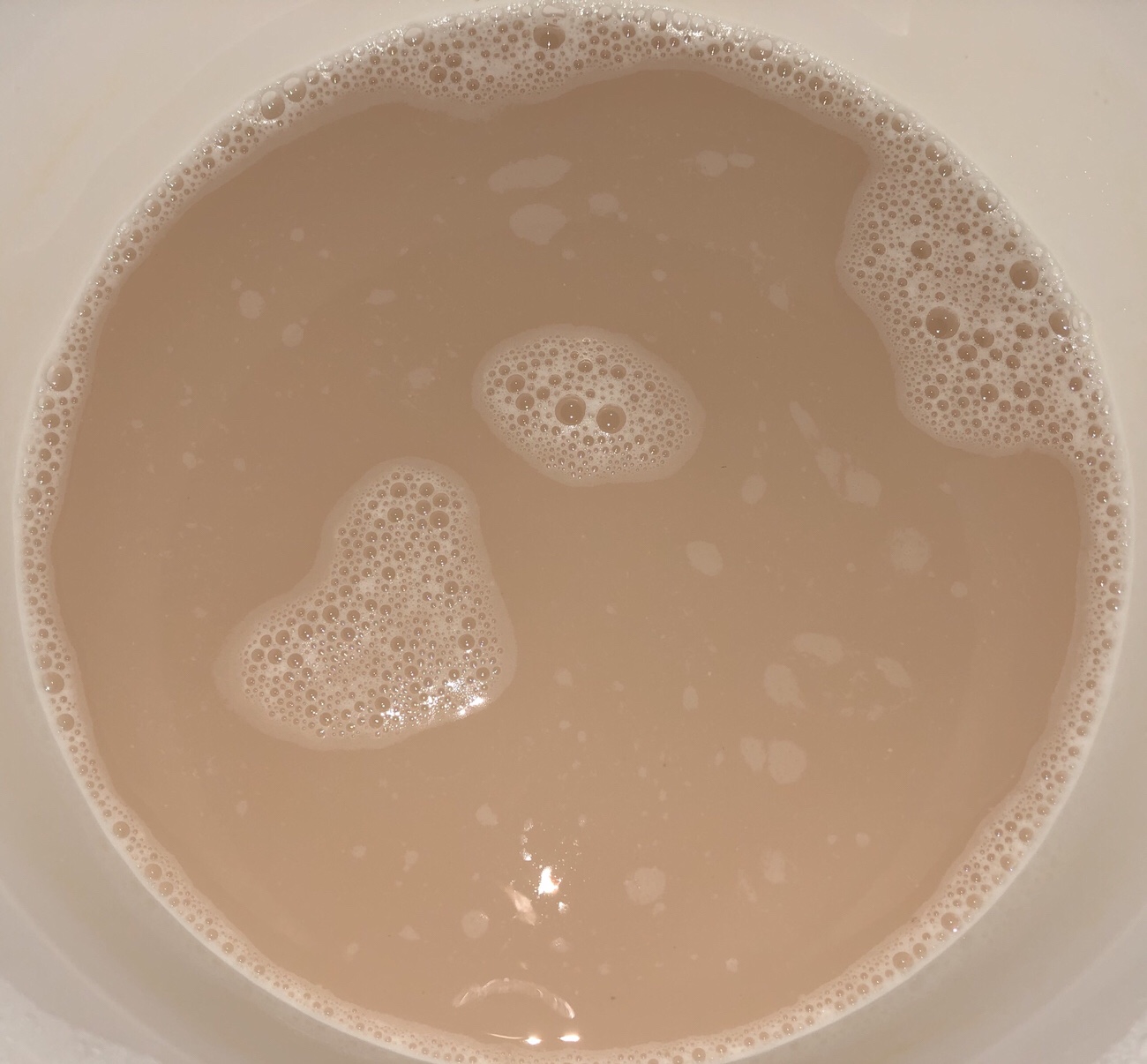
The Queen Anne’s Lace was so good in jelly – and those lacy flower heads keep springing up along the fencelines – I had to try making wine!
My recipe borrows from several different mint wine recipes. I’ve never tasted Queen Anne’s Lace wine, so the proportions may need to be tweaked once the finished product is sampled.
Queen Anne’s Lace Wine
- 6 cups Queen Anne’s Lace flower heads (umbels)
- 3 cups of sugar
- 3 Tbsp lemon juice (or 1 tsp acid blend)
- 1 tsp yeast nutrient
- 1/8 tsp tannin
- 1 gallon dechlorinated water
- 1 packet wine yeast (I used Red Star Premier Cuvée – and only about a third of a packet)
Begin by making an infusion (tea) from the flowers. Shake out the flower heads to evict any bugs (I also like to spread the flowers out on a cookie sheet and leave them for an hour or so to allow bugs to escape, then I relocate them outside) and put the flowers in a large jar.

Pour about 2/3 gallon of boiling water over the flowers, stir to ensure all flowers are submerged, and allow it to steep for several hours. After the steeping period has elapsed, strain the flowers out of the liquid into a primary fermenter. The liquid should still be a little warm. Add the sugar and stir until it is completely dissolved, then top up with the remaining 1/3 gallon of dechlorinated water.
Let the liquid cool to room temperature, then add the remaining ingredients, stirring to incorporate them. Cover and leave undisturbed until the next day.
The following day, check to ensure the yeast has activated. Assuming that it has, stir the liquid with a slotted spoon or paddle to aerate it and cover again. Repeat the aeration process for the next 5 days, then move the wine into a secondary fermenter with airlock. If the yeast doesn’t activate after 2 days, add more yeast and another teaspoon of yeast nutrient, stir, and make sure the fermenter is in a warm location.
Rack the wine to a clean carboy after 30 days, racking again in 30 days if needed (if there’s still significant sediment or it still needs to clear) and let it ferment dry. Backsweeten as needed.
The addition of the lemon juice turned the must a pretty pink color, and the fragrance was reminiscent of cooked carrots…no wonder this plant is also called “wild carrot”!


There are still plenty of Queen Anne’s Lace flowers blooming along the fencelines, so I’ll be making at least one more batch of wine. Soon, I’ll be harvesting elderberries and goldenrod, too, and they’ll become delectable syrup and wines. This is definitely the fruitful time of year!
Know what you’re harvesting: with any wild plant, it’s critically important that you correctly identify it to avoid ingesting a potentially toxic lookalike. If you’re a novice forager, it would be prudent to have an expert instruct you in the proper identification of this or any plant with which you are unfamiliar before you eat or use it. In short, as is stated in this Guide for Foragers, “DO NOT EAT ANYTHING YOU CANNOT POSITIVELY IDENTIFY AND DEEM SAFE.”
Interested in the wine’s progress? Sign up for notification of blog updates!

Comments are closed.